Last seen on farms during World War II, American hemp has come roaring back as highly therapeutic oil. Walk with us through the healing fields of Kentucky’s Atalo Holdings.
By Dave Carpenter
Ninety-year-olds Glenna and Jake Graves sit in the living room of their family farmhouse in Lexington, Kentucky, a home they’ve built over 70 years together, surrounded by family who watch Glenna’s hands shake with the tremors of advanced age.
“For the last 30 years or so, she’s had really bad tremors,” her son Andy Graves, 58, says. “Her hands shake all the time. In fact, she couldn’t hold a cup of water still if she tried.”
Glenna and Jake have lived here close to the fertile Kentucky soil through the Great Depression and World War II, growing hemp for the war effort as part of their civic duty. Jake is a 6th generation Kentucky hemp farmer who’s labored his entire life and is now enjoying the fruits of his labor with Glenna and their eight grown children nearby.
Glenna nibbles the corner of an edible cookie prepared with oil derived from Kentucky hemp. Andy brought it over.
Glenna waits for the hemp edible to take effect as friends and family mill about the living room. In time, the room grows quiet as someone notices Glenna’s hands become still. For the first time in 30 years the tremors completely subside.
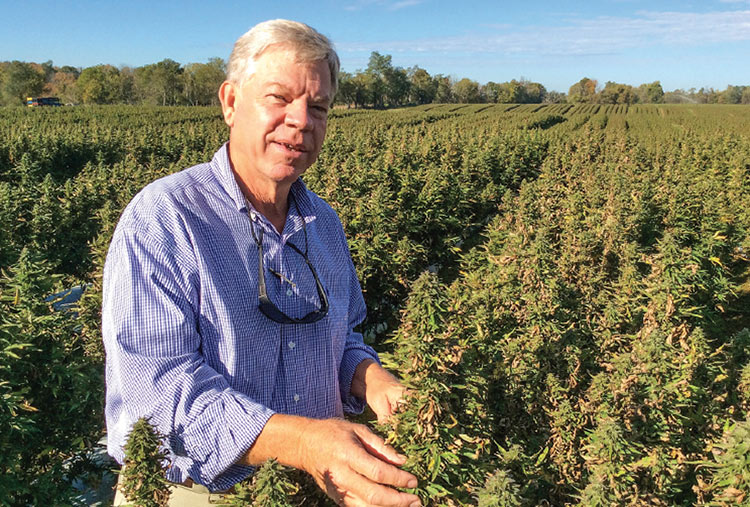
Andy Graves in his Kentucky Hemp Field at Atalo Holdings
“It was nothing short of amazing,” says Andy Graves. “She lifted up a glass of water and held it in the air. Then she put it down and picked it up again and there was not the least bit of shaking.”
Not a person in the room can believe what they’re seeing. Many in the room are brought to tears. Glenna’s husband Jake can hardly believe it. His wife’s hands that have shuddered and twitched by his side for over three decades are now calmed. A look of concern slowly draws over the nonagenarian’s face. “But son,” says Jake, “what will we do when the medicine runs out?”
“Daddy, don’t worry,” says Andy. “We have drums of this stuff filled to rafters.”
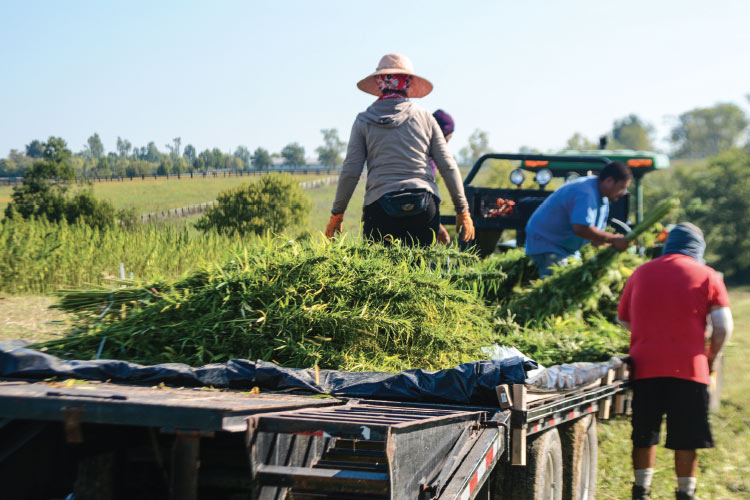 HEMP ACROSS THE HEARTLAND
HEMP ACROSS THE HEARTLAND
Hemp is not marijuana. Both are types of cannabis, but one is a fiber, fuel and food crop, the other gets you stoned.
For years now, marijuana advocates have known that many of the compounds present in the cannabis plant — hemp and medical marijuana — have the ability to lessen the symptoms of neurological disorders. The Graves are one of hundreds of thousands of families looking for relief from a variety of ailments. They just happen to be sitting on the biggest stocks of curative hemp-based oil America has ever seen.
This year, across the American heartland, hemp is being farmed in larger numbers than ever before. From Oregon to Kentucky, farmers ramped up production on fields that once produced tobacco, soy and corn. With those industries hit hard by economic shifts, hemp legalization is arriving in the nick of time.
Since the fateful signing of the Omnibus Farm Bill in 2014, which included an amendment allowing farmers to grow hemp as a “pilot program,” the crop is officially back after nearly 70 years as an illegal substance. And at long last, large amounts of hemp-derived cannabidiol (CBD) – the potentially curative compound found in marijuana and hemp – is becoming available across the nation. Recognized as a neuro-protectant, anti-inflammatory and more, CBD has been documented as a cure for maladies ranging from Parkinson’s Syndrome to fibromyalgia to ADHD.
At the present, 31 U.S. states have defined industrial hemp as “distinct from marijuana and removed barriers to its production,” says Vote Hemp, a national, nonprofit organization dedicated to the acceptance of and free market for industrial hemp. In 2015, seven states had hemp “research crops” in accordance with section 7606 and state law. And that year also saw five states – Colorado, Kentucky, Oregon, Tennessee and Vermont – with actual “licensed or registered farmers” able to put hemp in the ground protected by state law.
America has some serious catching up to do. A 2015 report by the Federation of American Scientists estimates the global market for industrial hemp consists of more than 25,000 products and countries ranging from China to Romania to Canada reap billions of dollars from hemp production, some of which ends up imported into the United States. By contrast, the U.S. market is puny, estimated at $580 million of revenue annually.
It’s perhaps this fact that many billions of dollars have been lost to the U.S. economy, along with decades of hard work by pro-hemp advocates across the country, that eventually led to the “Legitimacy of Industrial Hemp Research Section” to be included in the Farm Bill. The amendment freed farmers to grow hemp as a “pilot program,” in conjunction with state agricultural departments and universities, with the caveat that varieties could contain no more than 0.3 percent THC.
At a time when the American public is reaching a greater understanding of cannabis as a healing agent, it appears the stigma that once hung over the plant and its use is ebbing. What it might mean as a new therapeutic modality for the aging and infirm could have far reaching implications with untold positive outcomes.
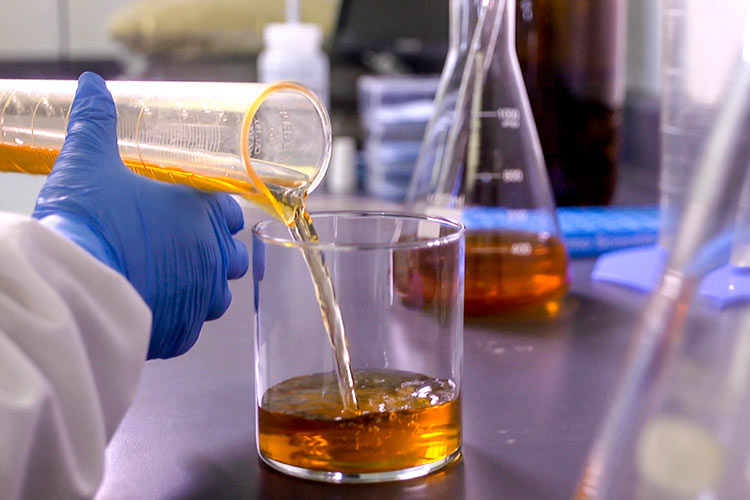
Hemp Derived CBD Oil from Atalo’s Lab
CAUGHT IN THE MIDDLE
Myrna and Michael Andersen, parents of five-year-old daughter Makaela, first heard about CBD oil during the spring of 2015. News of a non-toxic, potential treatment for rare nerve diseases had been splashed across headlines nationwide. The two wanted to know more about this apparent miracle drug. Their daughter was diagnosed with the neurological disorder Charcot Marie Tooth disease and doctors had all but given up on traditional medications. There is no known cure. Before long, the Andersen’s found an organization that was having success administering CBD to children with epilepsy and they managed to get Makaela on their waiting list.
“We were relieved to finally find a medical doctor who knew about CBD,” says Myrna. “We were really pretty desperate for help, and definitely wanted to see a medical doctor who could potentially administer this medicine.”
Unlike the story of “Brave Mykayla” — a celebrity pediatric cannabis patient — the Andersens would find themselves making no progress at all and languished on a long waiting list with not a doctor’s appointment in sight.
During that period, they’d missed a call from the CBD clinic while attending a crucial special-education meeting. Missing that call dropped them to the bottom of the already lengthy list, where they remain today.
“It was devastating to finally see a light at the end of the tunnel then get put on what felt like an endless list.”
This family isn’t alone. Their daughter is one of many people waiting to be seen by physicians who have their hands full treating people interested in CBD and only so much time and product to dedicate to patients. The backlog of individuals stems from tight state regulations around the administration of medical cannabis to children, complicated by the fact that the CBD is still considered by the Federal government to be a Schedule I drug “with currently no accepted medical use and a high potential for abuse.” This is, however, believed to be a fallacy, as evidenced by countless anecdotal success stories logged from Utah to Vermont touting the compound’s efficacy as a neuro-protectant.
Makaela’s story is not an uncommon one. Caught in the middle of a societal shift in opinions regarding cannabis use alongside a broken healthcare system, many patients find themselves stuck in the middle of a medical gray area waiting for help that in some cases never comes – until recently, when CBD derived from industrial hemp entered the national picture. That change is now allowing the compound to be sold as a “dietary supplement,” making domestic CBD ever-more available to people like Makaela’s family and the public at large for the first time in U.S. history.
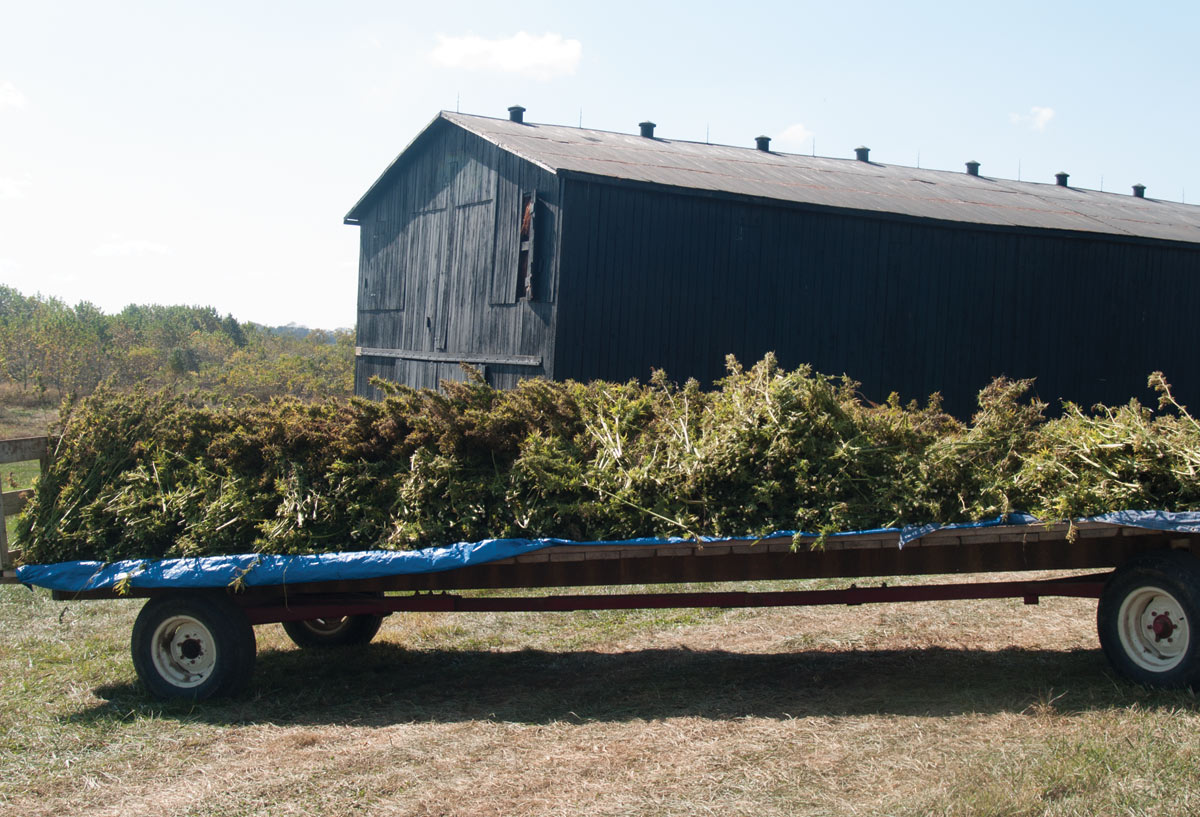
REVIVING A (NEARLY) LOST CROP
Driving north on I-75 through the hills of southern Kentucky feels like careening down a giant zip line through a vast jungle landscape. Just five feet off the shoulder the road is gobbled up by an endless, tangled wilderness of vegetation as far as the eye can see. The earth here practically pulsates with energy from the fertile soil. Locals will tell you “it’s in the water and the limestone.”
Up ahead roughly 90 miles towards Lexington is America’s new gushing well of CBD hemp oil, right smack dab in the heart of hemp country – once called the “Hemp Capital of the World.”
The history of hemp farming in the Bluegrass State goes back as far as the 1700s, before the region was a state and was a territory within the Commonwealth of Virginia. Early pioneers who settled the area found a need for materials to make clothing, as well as other fabrics and cordage. They discovered that the soil in and around Lexington proved perfect to grow hemp. The state’s geological riches sprout from a combination of high mineral content in the soil due to a massive limestone shelf beneath much of the state along with its fortunate location at the “Goldie Locks” latitude between 30-40 degrees, where much of the world’s high value crops are grown. While today much of the U.S. population remains relatively uninformed about industrial hemp, most Kentuckians have it deep in their heritage, like Texans do cattle.
Just east of Lexington, the signs on the road turn quintessentially Kentucky. In my path is “Bourbon County,” the home of the celebrated spirit sold the world over; “Man o’ War Boulevard,” named after the famed racehorse, is a 17-mile urban artery that encircles Lexington. Heading east, the pretty rolling hills to my left and right, called “knobs,” are blanketed with the most uniform grass imaginable, like fresh turf laid out over a lawn the size of an entire town. Uninterrupted green goes on and on and on.
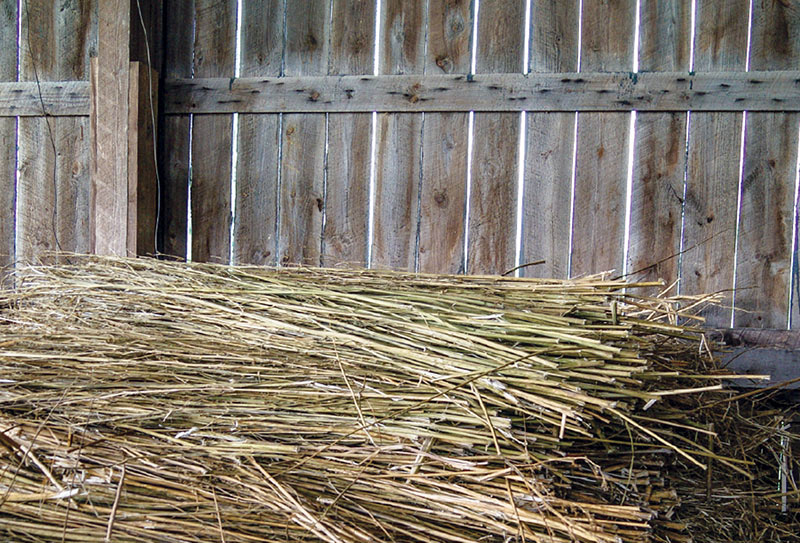
Pulling into my destination at the Hemp Research Campus in Winchester, I see for the first time since entering Kentucky the letters H-E-M-P spelled out on the front marquee. Seeing that word in public feels like a small triumph for a plant that remains on the federal government’s Schedule I listing and could still today find you imprisoned for its possession in nearly 20 U.S. states.
The 147-acre plot I’m entering once housed the F.W. Rickard Seed Company, a renowned producer of burley tobacco grown in Kentucky for more than 75 years. The campus, outfitted with all the tools necessary for hemp product manufacture – breeding rooms, seed cleaners, oil extraction facilities – is as apropos a location as possible for this newly resurrected, sustainable crop that could potentially fill the void that the waning tobacco industry has left behind.
The first person I meet is Andy Graves – the son of Jake Graves – a seventh generation hemp farmer and Chairman of Atalo Holdings, a hemp research and development consortium that currently works with 58 recently minted farmers of industrial hemp in Kentucky. He is a sensible man, and like most farmers has his feet planted firmly on the solid earth. For over 20 years Graves has been certain hemp could and should make its way back onto Kentucky farms. More than a few times, he has heard talk about himself, with people wondering, “why this kid with a good family reputation would be mixed up in a business like hemp legalization.”
It’s plain to see Graves’ drive to help Americans understand hemp’s utility and to get this industry up and running again. He is a man who wants his heritage back and knows it could kick-start the Kentucky economy again like it did in centuries past. Graves’ energy is endless. At the same time that he is overseeing his family’s agricultural enterprises for 30-plus years – tending cattle and growing soybeans, wheat, corn and tobacco – he runs a steady masonry business that pays the bills. As if that weren’t enough, he’s also spent the past two decades leading efforts to legalize and re-commercialize industrial hemp, he says, “after seeing the writing on the wall that tobacco farming would be seen less and less in the state.”
While the plant has been illegal to grow and out of sight in the U.S. for much of Graves’ life, it’s made an indelible mark on his DNA.
“Dad farmed hemp as a young man and grew it for the World War II ‘Hemp for Victory’ program,” says Graves, which compelled hemp farmers to supply rigging for Navy warships. Federal marshals confiscated the family’s hemp seed and some of their land in 1942 for military use and never returned it.
For two decades Graves has been compelling Kentucky politicians to give farmers another option for growing this viable commodity. In his work from 1994-2000, he served as president of the Kentucky Hemp Growers Cooperative Association and acted as a board member of the North American Industrial Hemp Council. He tells how he and his father would regularly visit government officials – Kentucky Sen. Mitch McConnell being one of them, who recognized Andy’s father but took years to come around to the idea that hemp would be good for the Kentucky economy. In the end, the conservative senator would later prove to be instrumental in helping to bring back hemp farming to Kentucky.
“Today, oddly enough,” says Graves, “hemp legalization is probably going to be Mitch McConnell’s greatest legacy to our state.”
RETURN OF THE HEMPIRE
In 2013, when it looked like a Farm Bill might be passed that would include hemp legalization, Graves visited respected seed breeder and colleague Tom Hutchens, 72, who for over 30 years was employed by F.W. Rickard Seed Company. During his time there, Hutchens led the company to become the world’s foremost burley tobacco seed breeder, controlling 85-90 percent of the globe’s certified burley tobacco seed market. His pursuits as a seedsman developing seed cultivars also led Hutchens to personally hold a U.S. patent for an air curing system that reduces tobacco-specific “nitrosamines,” the cancer-producing elements of cigarettes.
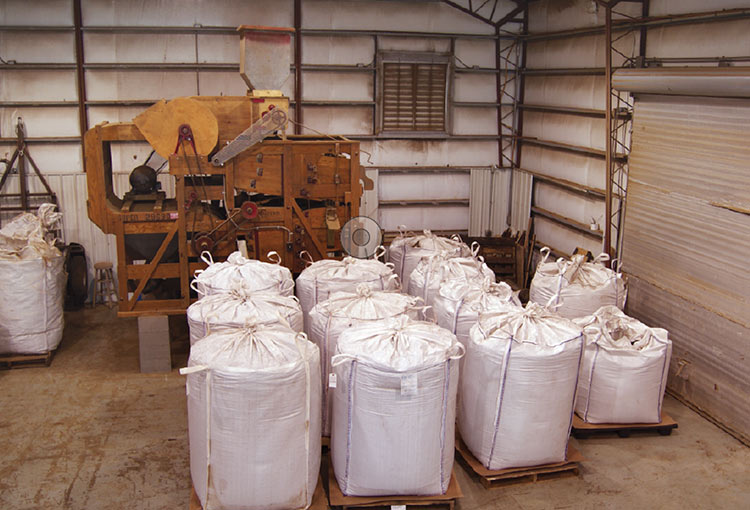
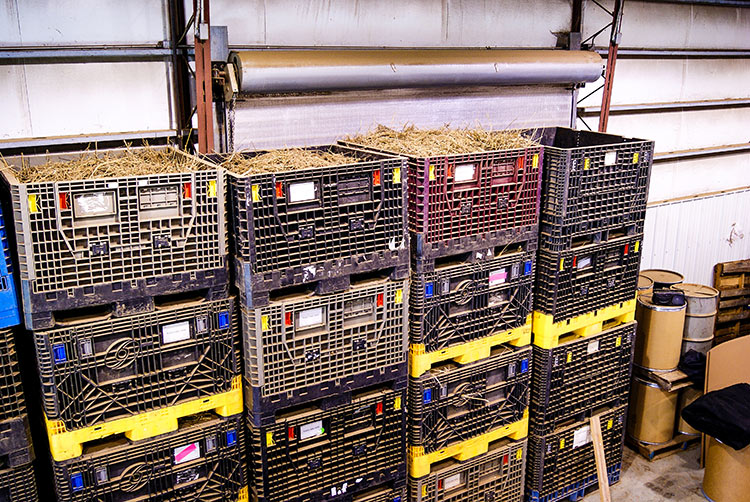
Hutchens is the consummate agriculturalist with hands that look like the raw earth itself. There’s a durableness in them that speaks of generations tilling the rich Kentucky soil. In those appendages and in his eyes you can see a man who has worked the land from sun up to sun down with little complaint. Sporting jeans and a tucked in collar shirt, he’s got the sleeves rolled back and ready for work. We’re chatting at the Winchester research campus as he’s telling me the story of his son who was diagnosed as a teenager with Tourette’s Syndrome, one of only five kids in Kentucky at that time identified as having the ailment.
“I learned that my son was self-medicating with cannabis,” says Hutchens. “It was apparently the only thing that made him feel okay. The rest of the time, he was having to work to remain in control.”
Hutchens turned his son in to the police four times after catching him smoking marijuana, before he fully understood why the boy relied on the substance simply to cope.
“One of the things that I learned about my son over the years was that his medicines work for a while and then they’ll become ineffective,” says Hutchens. “I see this out in the general public with a lot of folks. There is no norm really. We all have our uniquenesses, and some folk’s uniqueness doesn’t fit with what ‘normal’ folks are and they have a much tougher time fitting into the societal parameters of what normal might be.”
Hutchens admits that he “grew from that experience with his boy. It changed my life from being a black-and-white person to being very gray.”
“One of my real aspirations, is to have CBD not [completely] solve people’s problems, but to help them to be able to function with various kinds of neurological and physical issues. I believe this plant can help us do that.”
That experience, he says, is one of the variables that eventually led him to work with Graves on the hemp project. The fortunate nexus of Hutchens’ retirement from tobacco, his union with Atalo and the U.S. government’s inclusion of hemp legalization into the Farm Bill of 2014 perfectly dovetailed into his future aspirations: to work with a plant that could, as he says, “potentially heal people rather than one that has historically harmed people.”
“I found Tom retired and on his couch with a remote control in his hand,” says Graves, “and I said, ‘C’mon, work with us to get this crop back.’”
“I wanted to work with a plant that could potentially heal people rather than one that has historically harming people.” -Tom Hutchens, former tobacco farmer turned Hemp farmer
It didn’t take much prodding to convince Hutchens to come onboard. His unparalleled knowledge as a seed breeder would be key to developing new varieties of hemp in the nascent program. Before long Atalo Holdings was in motion and had moved into the old F.W. Rickard property and the “Winchester Hemp Research Campus” was formed – the ultimate symbol of rebirth for this industry that was lost for nearly 70 years, but is now safely back at home.
“We were pretty certain that the models for grain and tobacco production could be applied to hemp production,” says Hutchens.
Currently, over half of the roughly 4,500 acres of hemp grown in Kentucky this year is made up of Atalo’s “farmer members” group, which numbers 58 individuals, all with access to Atalo’s seed, technology and markets for their production.
Visiting a few of those farmers it’s evident to see the symbiotic relationship that has developed between Atalo and its contracted members.
One farmer member is Steve Jones, 56, whose family has farmed burley tobacco and tended milk cows in Bourbon County since 1968. He first began farming CBD-rich hemp along with Atalo in 2015. After signing a memo from the Kentucky Department of Agriculture (KDA) to legally farm hemp under Section 7606, Jones put plants in the ground. He’s only gone through one full season that started out a bit rough. The DEA held his seed at the Canadian border for months, then there torrential rains pummeled the new crop.
“It was good, though, considering what we went through,” he says about the nine inches of rain they received over three days just after planting and the DEA’s seed meddling. “Still, it was a good year for the first year.”
This planting season, so far unimpeded by government officials or weather, Jones feels similarly optimistic.
“We’re just steadily trying to figure out how to grow it, process it and harvest it,” he says. “We’re learning.”
Another farmer, Gary Hilliard, 32, is growing CBD-rich hemp for his second year but as a rotation crop on his organic wheat farm. He was searching for another crop to use in rotation between his wheat crops that was also grown with organic practices in mind and Atalo’s approach of refraining from pesticide or fungicide use fit the bill. “I think it’s one of the more useful crops in terms of just what you can use it for,” he says.
Currently, over half of the roughly 4,500 acres of hemp grown in Kentucky this year is made up of Atalo’s “farmer members” group, which numbers 58 individuals, all with access to Atalo’s seed, technology and markets for their production.
Hilliard said he’s also impressed with the way the state of Kentucky decided not to pursue medical marijuana legalization, which he believes could have muddied the political waters and made the issue of hemp legalization a more complex sell to the public.
I find his sentiment rings perfectly true when I attempt to reach the University of Kentucky’s Industrial Hemp Research Program and get a very polite reply telling me they’d rather not participate in this article.
“Considering the extremely negative political climate in Kentucky regarding all things cannabis except those lines producing less than 0.3% THC,” said the email response, “I must respectfully decline your offer for an interview. It is imperative that our research program remain distinctly unconnected to anything related to marijuana.”
Hilliard also gives credit to government officials for removing most of the barriers for farmers to get plants in the ground and giving this renewed industry every opportunity to thrive from the start.
Kentucky Commissioner of Agriculture Ryan Quarles, who refers to hemp as “a bridge from Kentucky’s past to our future,” said, “The Kentucky Department of Agriculture and our partners are committed to building upon the solid foundation of research for a Kentucky hemp industry that will create jobs and new marketing opportunities.”
The programs growing popularity – which increased exponentially from 33 acres in 2014 to 1762 acres in 2015 to now 4500 acres in 2016 – predicts long-term stability for the program.
“I don’t say this much,” says Hilliard, “but I feel our politicians really got it right here.”
THE CBD OIL WELL
I’ve been shown around most of the hemp research campus by Graves and Hutchens but have yet to view where the crown jewel of CBD extraction takes place. Both men have struck me as gentleman farmers, each with his own respectable, steady history in the Lexington farm community. Each has been very open in his own way to discuss his personal connection with the hemp plant. All of the other members I’ve met at Atalo, as well, from the business development team to farmers, are a similar brand of hardy people – industrious, helpful folks who in a pinch could probably fix a busted tractor engine with some baling wire and a pair of pliers. They drive beat up SUVs and wear boots caked with mud. But for a better part of the day, I’ve anxiously awaited the arrival of the extractor who’s been hired to take many thousands of pounds of hemp plant matter and extract from it the coveted CBD oil.
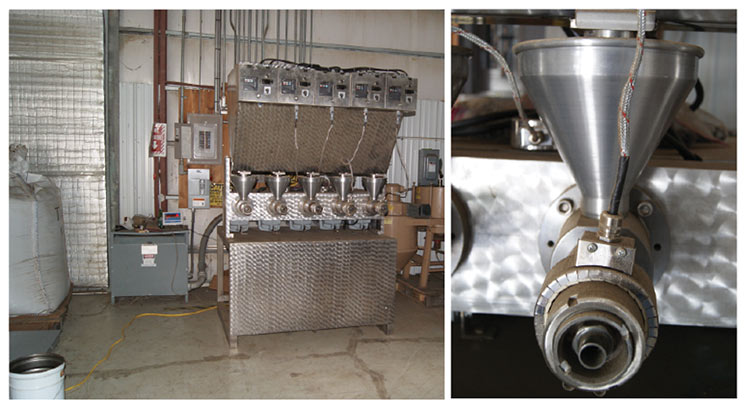
In my mind’s eye I picture a farmer in his 50s with a Southern twang and some connection to the Department of Agriculture. When a bearded, 30-something Robert Gaither walks into the room casually dressed, I reflexively do a double-take realizing that the CBD extractor is actually a California native who could comfortably fit into a room of Humboldt heads chatting about the next killer marijuana strain. He greets me and says he’s familiar with Cannabis Now Magazine. After just a few moments chatting with Gaither, it’s clear he has an expansive knowledge of the marijuana cultivation scene and deep experience as a concentrate extractor. Gaither’s company Genius Extraction Technologies, cofounded along with his wife Brenna who holds a bio-chemistry degree, is an extraction equipment company that uses the process of “chilled ethanol extraction.”
Graves explains that they hired Genius Extraction for a few particular reasons, most notably they’re the only extractor in the U.S. to hold an OSHA-compliant, certified Class I/Division II explosion-proof processing license. Having grown cannabis for many years, they have a deep understanding of the cannabis plant and know an efficient and safe process by which to extract CBD from the hemp plant.
Touring through the campus we eventually make our way into the lab where the actual oil is manufactured. Glass beakers, test tubes and stainless steel machinery surround us. There are glass coils, filters and items I have no name for, most of it a confusing Rube Goldberg circuit of vacuum gauges and dials. Gaither explains that the process of extraction involves removing fatty acids and lipids from the plant matter using chilled alcohol. Here, he says pointing, is where they’ll take ground up flower and leaf matter and dip it into alcohol chilled at 15 degrees Celsius. Over there is where the frozen fats and lipids with chlorophyll are suspended in a solution and filtered through, revealing a material, says Gaither, “with the texture of a warm candle that smells like rich cannabis.”
Oil collection will occur in different stages and be filtered at each point in the system using a vacuum process rather than the more prevalent pressure system of CO2 extraction. Essentially filtering out impurities like a stainless steel reverse-osmosis water system, the industrial-size device is perfect for Atalo’s “small-batch” approach to extraction. But that doesn’t mean they will be extracting matter slowly. The team talks about extracting a staggering 100 pounds of plant matter per hour, citing others in the industry extracting at a rate of about 10-15 pounds per hour using CO2-extraction methods. Graves feels they can be at 200 pounds by the end of this year. Gaither is looking up at the 55-gallon drums of hemp stacked floor to ceiling and I think I see on his face a tiny amount of trepidation as he does the math. That look quickly turns to resolve and he says, “We can do that. We will do that.”
We walk back through the storage area of the laboratory, where 40,000 pounds of certified, proprietary CBD-rich plant matter, bred specifically for that high content, is stacked up in scores of 55-gallon drums. Gaither digs into a barrel and holds some of the plant matter in his hands gesturing for me to take a whiff.
“Do you smell that?” he says crushing the ground bud between his palms. “This hemp has a cannabis hayback, a sweet smell like cut lawn, orange citrus, lavender… there’s a lot happening there. It’s incredibly terpy,” he says referring to the terpenes, or essential oils of the plant, that give off fragrances.
Graves laughs as the extractor and I breathe in the ground-up hemp. For a moment I wonder if Graves minds this collision of the hemp and marijuana worlds. When Gaither admits that he rolls and smokes the hemp regularly to test different levels, I realize I haven’t breached etiquette one bit.
“Don’t you think a vintner drinks the wine he makes?” says Graves. “Well, Robert is like our vintner.”
As we begin to wrap up our time together, Graves explains to me that the name they’ve come up with for their CBD oil product is LifeLeaf, named for the calming effect the plant had on his mother’s tremors.
“This leaf gave her life,” he says.
Glenda’s still got all the aches and pains of a 90-year-old, and has been in and out of the hospital lately, but she’s doing ok, Andy says. The tremors go away when she has CBD and she takes regular low doses. It hasn’t cured her completely but has made life a little better.
Hutchens offers to drive me out to have a closer look at a beautiful old barn we’ve been passing by all day on the campus. The setting sun is casting a warm glow across the farm and lighting up the old tobacco barn – a structure that looks to have seen more years than Hutchens and I combined.
Standing beside a great mound of sheared industrial hemp stalks reminiscent of Claude Monet’s “Haystacks” paintings, the farmer brings up his son again and his struggles with Tourette’s Syndrome and how it changed him and his opinions about cannabis in general.
“I really grew through that experience with my boy,” says Hutchens. “We have to be much more understanding of people and we need many more tools to work within that. One of my goals with this is to see hemp seed available in every school lunchroom in the country.”

